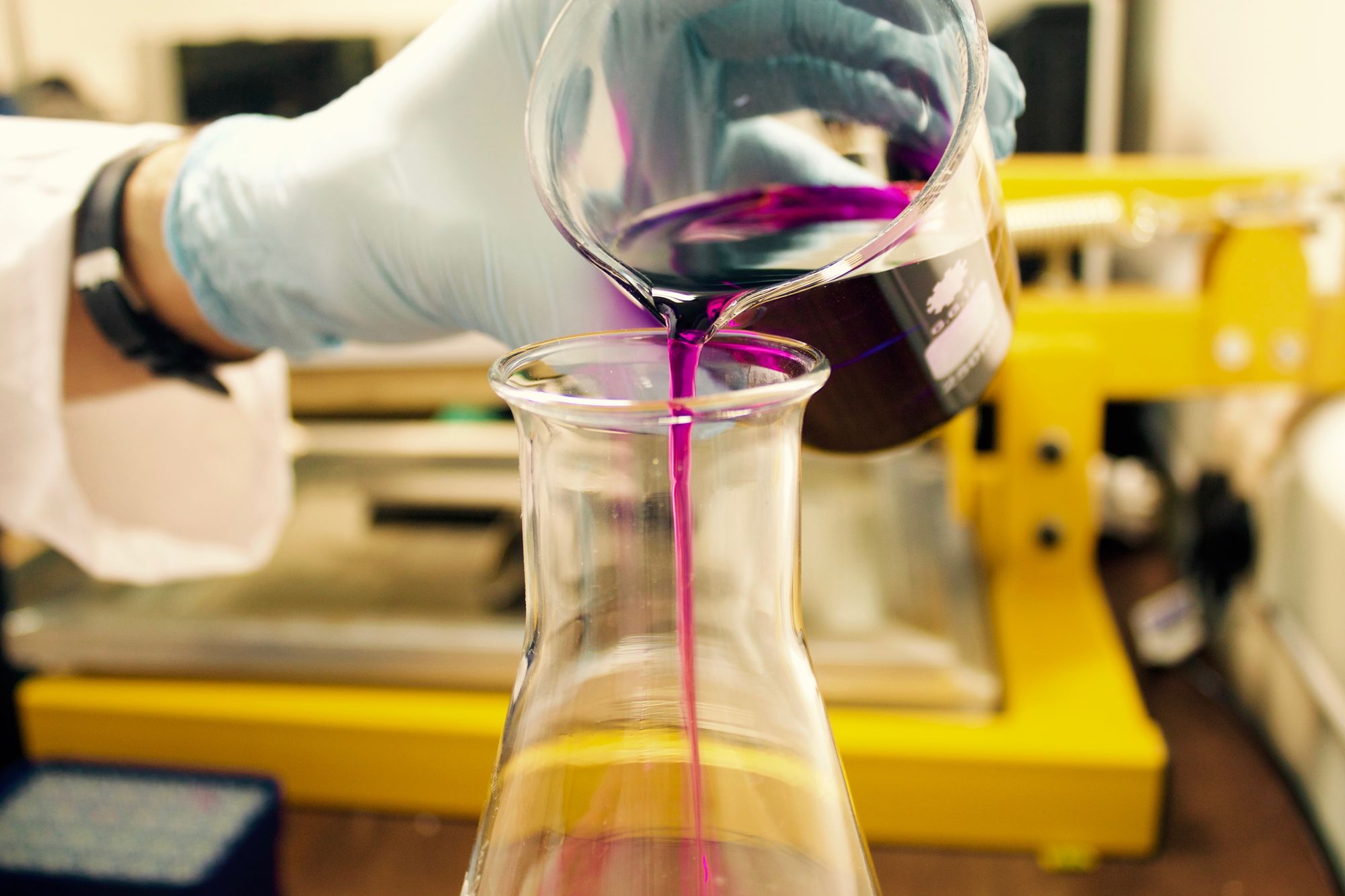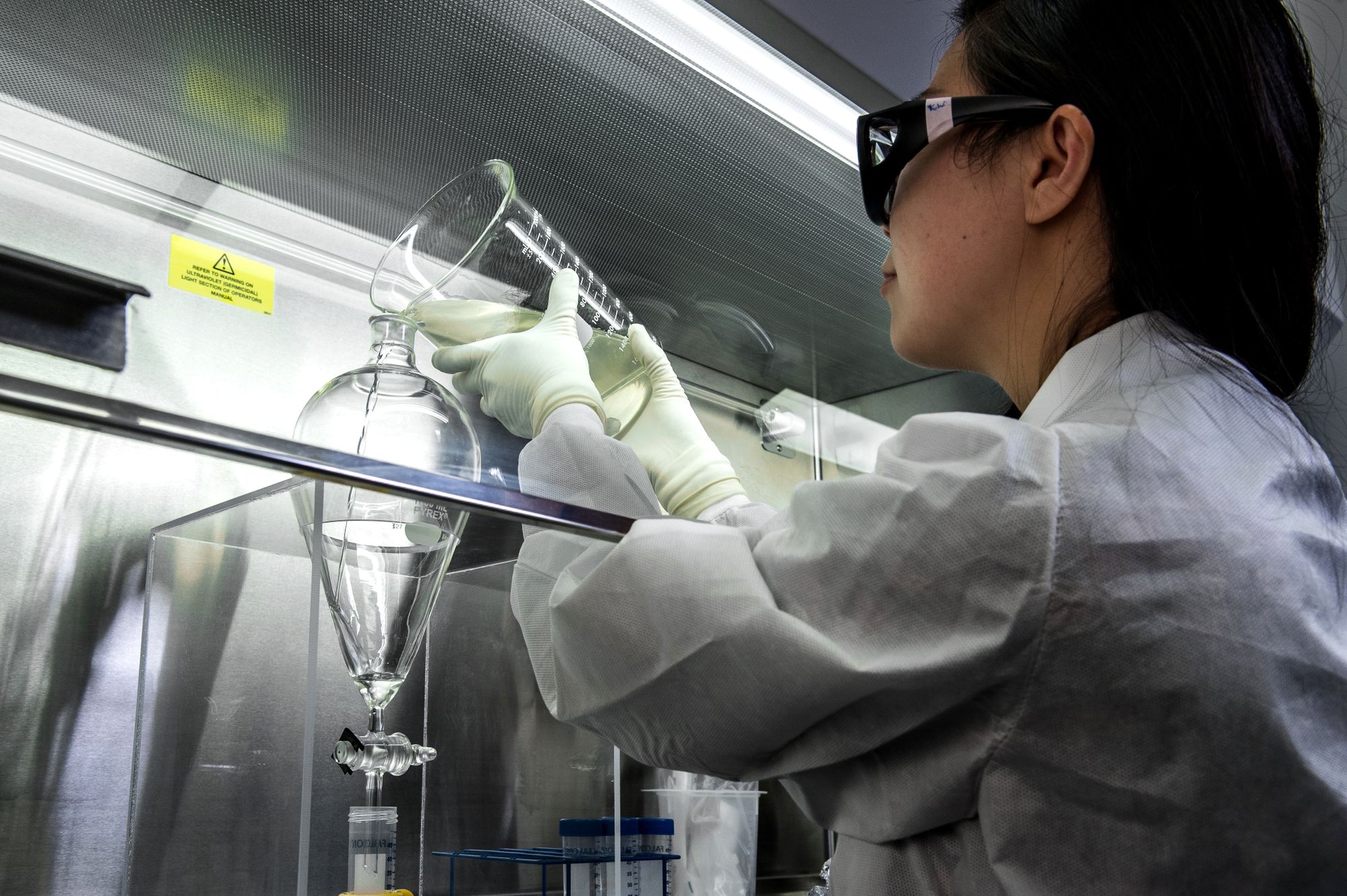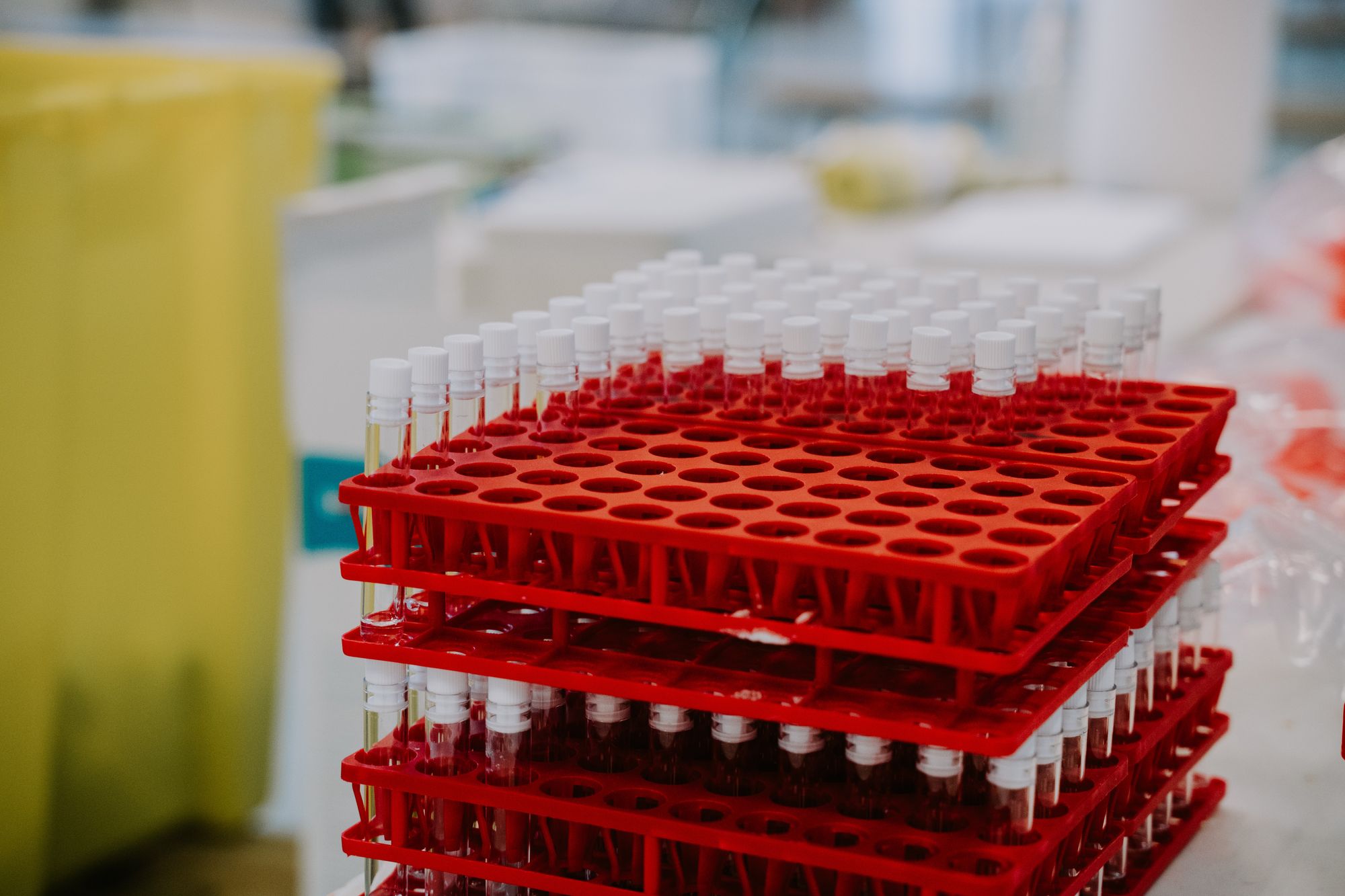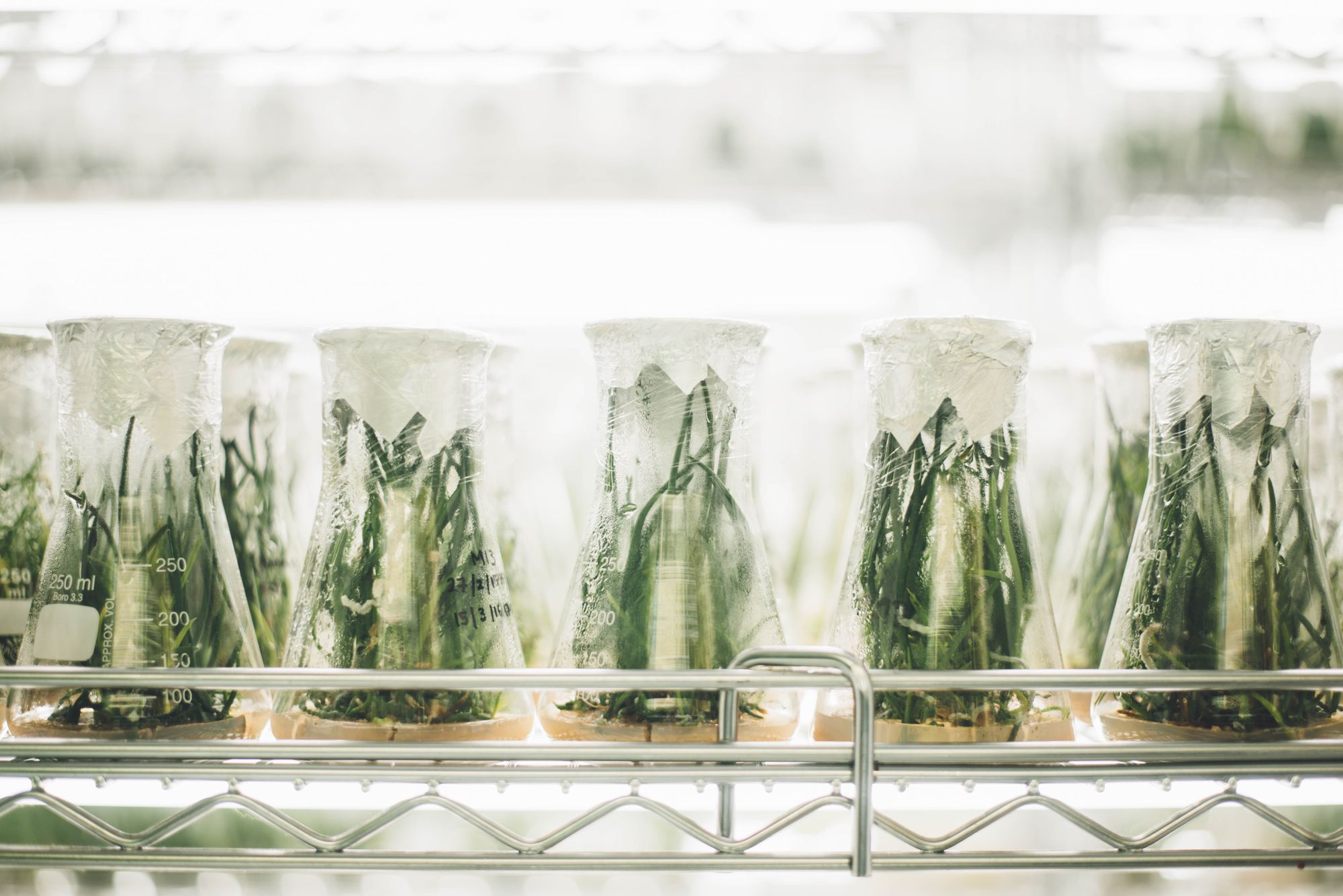Have you ever wondered what drives the Pest Control Chemical Manufacturing industry? What key factors influence the manufacturing and distribution of pest control chemicals?
The demand for pest control chemicals has been driven by the need to protect homes, businesses, and agricultural crops from pests that can cause significant economic losses and health hazards.
One of the key drivers of pest control chemical manufacturing is the increasing demand for effective and efficient pest control solutions. This demand is fueling the development of new and innovative pest control products that are more effective, eco-friendly, and safer to use.

In this article, we're going to dive deep into the exciting world of pest control chemical manufacturing and identify the key drivers that keep this industry buzzing.
From government regulations and consumer demand to technological advancements and environmental concerns, we'll explore all the factors that shape this industry.
Here's what we shall cover in this post:
- Understanding the Role of Pest Control Chemicals in Agriculture and Public Health
- Growing Market for Pest Control Chemicals
- Common Challenges Faced by Pest Control Chemical Manufacturers
- Developing an Effective Pest Control Chemical Production Plan
- Choosing the Right Pest Control Chemical Manufacturing Equipment and Tools
- Meeting Regulatory Requirements in Pest Control Chemical Manufacturing
- Innovation in Pest Control Chemical Manufacturing
- Conclusion
- Key Takeaways
Understanding the Role of Pest Control Chemicals in Agriculture and Public Health
Pest control chemicals play a crucial role in agriculture and public health by controlling pests and preventing the spread of diseases. Here are some important points to understand about their role:
Importance in Agriculture: Pest control chemicals are used in agriculture to control crop-damaging insects and diseases, which can significantly impact crop yields and quality. They are also used to prevent the spread of weeds, which can compete with crops for resources.
Benefits for Public Health: Pest control chemicals also play an essential role in public health by controlling pests that carry diseases. For example, mosquitos can carry deadly diseases like malaria, dengue fever, and Zika virus, which can be prevented by using insecticides.
Types of Pest Control Chemicals: There are various types of pest control chemicals, including insecticides, herbicides, fungicides, and rodenticides. Each type targets a specific type of pest and works in a different way.
Risks and Safety Concerns: While pest control chemicals are effective in controlling pests, they also carry risks and safety concerns.
Exposure to these chemicals can be harmful to humans, animals, and the environment, making it essential to follow safety guidelines and regulations when using them.
Importance of Proper Use and Application: Proper use and application of pest control chemicals are crucial to ensure their effectiveness and minimize risks. This includes following label instructions, using the correct dosage, and applying the chemicals safely and carefully.
Role in Integrated Pest Management: Pest control chemicals are just one component of integrated pest management (IPM), which is a holistic approach to pest control that also includes prevention, monitoring, and non-chemical control methods.
Using IPM can minimize the use of pest control chemicals, reducing the risks associated with their use.
Regulations and Oversight: Pest control chemicals are heavily regulated to ensure their safety and effectiveness. Government agencies such as the Environmental Protection Agency (EPA) oversee the registration and approval of these chemicals, and manufacturers must follow strict guidelines for their production, labeling, and use.
Research and Development: Developing new and improved pest control chemicals is ongoing, as pests can resist existing chemicals over time.
Research and development in this area are critical to ensuring the continued effectiveness of these chemicals and minimizing risks to human health and the environment.
Overall, pest control chemicals play a critical role in agriculture and public health, but their use must be managed carefully to ensure their safety and effectiveness.
By following best practices, such as proper use and application, integrated pest management, and adherence to regulations, their benefits can be maximized while minimizing risks.
Growing Market for Pest Control Chemicals
The market for pest control chemicals is constantly evolving due to technological advancements, changing consumer preferences, and the increasing demand for sustainable and eco-friendly products. Here are some trends and forecasts for the growing market:
Increasing Demand for Eco-Friendly and Sustainable Products
Consumers are becoming more environmentally conscious and are demanding products that are safe for the environment and their health.
This has led to the development of eco-friendly and sustainable pest control chemicals, which are expected to see significant growth in the coming years.
Rising Awareness of the Importance of Pest Control
With the growing global population, the demand for food is increasing, making pest control more important than ever before. Awareness of the importance of pest control in agriculture and public health is increasing, leading to increased demand for pest control chemicals.
Technological Advancements in Pest Control Chemicals
Advancements in technology have led to the development of new and more effective pest control chemicals. For example, using nanotechnology to develop pest control products has led to increased efficacy and reduced environmental impact.
Increasing Use of Integrated Pest Management
Integrated pest management (IPM) is becoming more popular as a method of pest control. IPM uses a combination of chemical and non-chemical methods to control pests, reducing the reliance on chemical pesticides.
This is expected to drive demand for pest control chemicals that are compatible with IPM.
Growing Demand for Pest Control Chemicals in Developing Countries
Developing countries are experiencing a growing demand for pest control chemicals as their populations and agricultural sectors grow.
The Asia-Pacific region is expected to see significant growth in the pest control chemicals market due to increased urbanization and the growing importance of food security.
Impact of COVID-19 on the Pest Control Chemicals Market
The COVID-19 pandemic has significantly impacted the pest control chemicals market, with increased demand for products that can help prevent the spread of disease.
The pandemic has also led to a greater focus on sanitation and cleanliness, driving demand for pest control chemicals in the food processing and healthcare sectors.
Consolidation of the Pest Control Chemicals Market
The pest control chemicals market is highly competitive, with a large number of small and medium-sized companies.
However, there is a trend towards consolidation, with larger companies acquiring smaller ones to increase their market share and expand their product portfolios.
Forecast for the Pest Control Chemicals Market
The global pest control chemicals market is expected to grow at a CAGR of 5.2% from 2021 to 2028, reaching a value of $31.26 billion by 2028.
The Asia-Pacific region is expected to see the highest growth, with increasing demand for pest control chemicals in agriculture and urbanization driving the market growth.
Common Challenges Faced by Pest Control Chemical Manufacturers
Pest control chemical manufacturers face a variety of challenges that can impact their success in the industry. Understanding and addressing these challenges is crucial to ensure a sustainable and profitable business. Here are some common challenges faced by pest control chemical manufacturers:
Compliance with Regulations: Pest control chemical manufacturers must comply with a variety of regulations and standards set by government agencies and industry associations.
This can include product labeling, packaging, storage, transportation, and disposal requirements. Failure to comply with these regulations can result in fines, legal liabilities, and damage to the company's reputation.
Environmental Concerns: The use of pest control chemicals can have negative environmental impacts, including pollution of water and soil, harm to non-target species, and disruption of ecosystems.
Manufacturers must strive to develop and promote products that minimize these impacts and are environmentally sustainable.
Health and Safety: The manufacture of pest control chemicals involves handling hazardous materials and potentially dangerous equipment. It is critical to implement safety protocols and provide training to workers to prevent accidents and injuries.
Cost of Production: Manufacturing pest control chemicals can be expensive due to the high raw materials, equipment, and labor costs. Manufacturers must strive to optimize their processes and reduce costs without compromising the quality and safety of their products.
Competition: The pest control chemical industry is highly competitive, with many players vying for market share. Manufacturers must differentiate themselves through product innovation, customer service, and marketing strategies to stay ahead of the competition.
Supply Chain Disruptions: The COVID-19 pandemic highlighted the vulnerability of global supply chains to disruptions. Manufacturers must ensure the reliability and resilience of their supply chains to prevent shortages and delays in production and delivery.
Changing Consumer Preferences: Consumers are increasingly demanding environmentally friendly and sustainable products. Pest control chemical manufacturers must respond to these changing preferences by developing and promoting products that meet these criteria.
Research and Development: The pest control industry is constantly evolving, with new pests and new control methods emerging. Manufacturers must invest in research and development to stay ahead of the curve and develop innovative products that meet the market's evolving needs.
Brand Reputation: The reputation of a pest control chemical manufacturer can impact its success in the market. Negative publicity due to product defects, safety issues, or environmental impacts can damage the company's brand and reputation, leading to loss of customers and revenue.
Global Economic Conditions: Pest control chemical manufacturers can be impacted by global economic conditions, such as currency fluctuations, trade policies, and geopolitical instability.
Manufacturers must be aware of these factors and develop strategies to mitigate their impact on the business.
Developing an Effective Pest Control Chemical Production Plan
Pest control chemical production is a complex and challenging process that requires careful planning and execution. Developing an effective production plan is essential to ensure the timely and efficient delivery of high-quality products.
Here are some tips on developing an effective pest control chemical production plan:
- Establish Clear Production Goals: The first step in developing an effective pest control chemical production plan is to establish clear production goals. This involves identifying the target production volume, production timeline, and other critical performance indicators.
- Conduct a Thorough Production Analysis: To create a comprehensive pest control chemical production plan, conducting a thorough production analysis is essential. This includes evaluating the current production processes, identifying areas for improvement, and developing strategies to enhance efficiency and productivity.
- Develop a Detailed Production Schedule: A detailed production schedule is essential for effective production planning. The schedule should include all critical production steps, including raw material procurement, formulation, blending, filling, labeling, packaging, and quality control.
- Implement an Effective Inventory Management System: Effective inventory management is crucial for maintaining a steady supply of raw materials and finished products. Implementing an inventory management system can help streamline the production process and reduce waste.
- Ensure Quality Control: Quality control is essential for producing high-quality pest control chemicals. Establishing rigorous quality control procedures, including regular testing and inspection, can help ensure product quality and compliance with industry standards.
- Incorporate Lean Manufacturing Principles: Incorporating lean manufacturing principles can help streamline production processes and reduce waste. This includes implementing just-in-time inventory systems, optimizing production flows, and reducing non-value-added activities.
- Utilize Technology: Utilizing technology can help improve efficiency and productivity in pest control chemical production. This includes using automation and robotics to streamline production processes, implementing data analytics to monitor production performance, and adopting digital inventory management and quality control tools.
- Invest in Employee Training and Development: Investing in employee training and development is essential for building a skilled and knowledgeable workforce. Ongoing training can help ensure that employees are up-to-date on the latest industry trends, technologies, and best practices.
Choosing the Right Pest Control Chemical Manufacturing Equipment and Tools
Pest control chemical manufacturing is a complex process that requires specialized equipment and tools to ensure high-quality and efficient production. Choosing the right equipment and tools is essential for optimizing the manufacturing process and achieving the desired results.
Here are some key considerations for selecting the appropriate equipment and tools for pest control chemical manufacturing:
- Type of Pest Control Chemicals: The type of pest control chemicals manufactured will determine the required equipment and tools. For example, liquid chemicals may require different equipment than dry chemicals.
- Production Capacity: The production capacity of the manufacturing facility will also influence the equipment selection. Choosing equipment that is too small can lead to inefficiencies and production bottlenecks while selecting equipment that is too large can be wasteful and expensive.
- Compatibility: The equipment and tools chosen must be compatible with the specific pest control chemicals being produced. Incompatible equipment can lead to contamination and damage to the products.
- Quality Control: Quality control is essential to pest control chemical manufacturing. Equipment and tools used for quality control should be accurate, reliable, and easy to use.
- Safety Features: Safety should always be a top priority in pest control chemical manufacturing. Choosing equipment and tools with appropriate safety features can help prevent accidents and protect workers.
- Ease of Maintenance: Equipment and tools that are easy to maintain and repair can save time and money in the long run. It is important to consider the availability of spare parts and technical support when selecting equipment and tools.
- Cost: The cost of the equipment and tools is an important consideration for any manufacturing facility. Balancing the initial investment with the long-term benefits and ROI is essential.
Examples of equipment and tools commonly used in pest control chemical manufacturing include:
- Mixers and Blenders: Mix and blend ingredients to create the desired chemical composition.
- Reactors: Used for the chemical reactions that create the final product.
- Filtration Systems: Used for filtering impurities and separating solids from liquids.
- Centrifuges: Used for separating liquids from solids or for separating two immiscible liquids.
- Drying Ovens: Used for drying and removing moisture from products.
- Packaging Equipment: Used for packaging and labeling finished products.
- Laboratory Equipment: Used for quality control and testing of products, such as spectrophotometers and chromatographs.
Meeting Regulatory Requirements in Pest Control Chemical Manufacturing
Meeting regulatory requirements is a critical aspect of pest control chemical manufacturing. It is essential to ensure that the chemicals produced are safe for use and do not harm the environment.
Here are some of the best practices for meeting regulatory requirements in pest control chemical manufacturing:
Understand the regulations: The first step in meeting regulatory requirements is understanding them. The regulatory framework for pest control chemicals varies from country to country, and it is essential to be familiar with the regulations that apply to your business.
Obtain the necessary permits and licenses: Depending on the location of your manufacturing facility, you may need to obtain permits and licenses from local, state, or federal authorities. These permits and licenses ensure that your facility is compliant with regulatory requirements.
Keep accurate records: Keeping accurate records of your manufacturing processes and the chemicals produced is crucial. Regulatory agencies may require you to provide detailed information on your manufacturing processes and products. Accurate records will help you meet these requirements.
Conduct regular inspections: Regular inspections of your manufacturing facility can help you identify any compliance issues before they become more significant problems. Inspections should include a review of your manufacturing processes, equipment, and records.
Implement quality control measures: Quality control measures can help ensure your products meet regulatory requirements. These measures may include testing and analyzing the chemicals produced to ensure they meet established quality standards.
Train your employees: Employees should be trained on the regulations that apply to your business and the importance of compliance. They should also be trained on the manufacturing processes and quality control measures to ensure compliance.
Maintain open communication with regulatory agencies: Open communication can help ensure you meet their requirements. Establishing a positive relationship with these agencies can help you navigate any compliance issues that may arise.
Innovation in Pest Control Chemical Manufacturing
Innovation in pest control chemical manufacturing has become increasingly important as the need for more effective and sustainable pest control solutions continues to grow.
Here are some key points to consider when it comes to innovation in this industry:
Advancements in formulation technology: Recent innovations in formulation technology have allowed for the development of more efficient and effective pest control products.
These new formulations may include microencapsulation or nanoemulsion technologies, which can enhance the efficacy and reduce the toxicity of pest control chemicals.
Integration of biological control methods: The use of biological control methods, such as introducing natural predators or using pheromones to disrupt mating patterns, has become an increasingly popular alternative to traditional chemical pesticides.
Innovative approaches to biological control can lead to more sustainable and environmentally-friendly pest control solutions.
Use of precision agriculture techniques: Precision agriculture techniques, such as drone and satellite imaging, can help pest control companies target specific areas and pests with greater accuracy.
This can reduce the amount of chemicals needed, leading to a more sustainable and cost-effective approach to pest control.
Development of non-toxic alternatives: Many consumers are becoming more concerned about the potential health and environmental risks associated with traditional chemical pesticides.
As a result, there has been an increase in the development of non-toxic alternatives, such as biopesticides or plant-derived solutions.
Incorporation of digital technologies: Digital technologies, such as artificial intelligence and machine learning, can help pest control companies optimize their production processes and improve the efficacy of their products.
For example, predictive analytics can identify areas likely to experience pest infestations, allowing companies to proactively address these issues.
Emphasis on sustainability: Using more sustainable pest control solutions has become a key focus for many companies in the industry. This may include using renewable resources, reducing waste, or implementing more environmentally-friendly production processes.
Collaboration and partnerships: Collaboration and partnerships between pest control companies, researchers, and other stakeholders can lead to the developing new and innovative pest control solutions.
By working together, these groups can share knowledge and resources to address common challenges and find new pest control methods.
How Deskera Can Assist You?
Deskera MRP allows you to closely monitor the manufacturing process. From the bill of materials to the production planning features, the solution helps you stay on top of your game and keep your company's competitive edge.

Deskera ERP and MRP system can help you:
- Manage production plans
- Maintain Bill of Materials
- Generate detailed reports
- Create a custom dashboard
Deskera ERP is a comprehensive system that allows you to maintain inventory, manage suppliers, and track supply chain activity in real-time, as well as streamline a variety of other corporate operations.
Deskera Books enables you to manage your accounts and finances more effectively. Maintain sound accounting practices by automating accounting operations such as billing, invoicing, and payment processing.
Deskera CRM is a strong solution that manages your sales and assists you in closing agreements quickly. It not only allows you to do critical duties such as lead generation via email, but it also provides you with a comprehensive view of your sales funnel.
Deskera People is a simple tool for taking control of your human resource management functions. The technology not only speeds up payroll processing but also allows you to manage all other activities such as overtime, benefits, bonuses, training programs, and much more. This is your chance to grow your business, increase earnings, and improve the efficiency of the entire production process.
Conclusion
The pest control chemical manufacturing industry is a rapidly growing sector vital in safeguarding public health and protecting crops and property from pests. Understanding the key drivers of this industry is essential for manufacturers to develop effective strategies that can help them stay competitive and meet the market's changing demands.
By analyzing factors such as consumer trends, technological innovations, regulatory changes, and supply chain dynamics, manufacturers can gain valuable insights into the industry and identify opportunities for growth and innovation.
With a focus on continuous improvement and adaptation to changing market conditions, manufacturers can stay ahead of the competition and meet the growing demand for pest control products that are effective, safe, and sustainable.
Through collaboration and knowledge sharing across the industry, manufacturers can work together to achieve a common goal of delivering high-quality pest control products that protect the health and well-being of consumers and the environment. Ultimately, manufacturers can ensure their success in this dynamic and critical industry by identifying and responding to the key drivers of pest control chemical manufacturing.
Key Takeaways
- Identifying key pest control chemical manufacturing drivers can help companies develop targeted strategies to improve their operations and increase efficiency.
- Pest control chemical manufacturing drivers include factors such as raw materials, production processes, labor, energy costs, and regulatory compliance.
- Raw materials play a significant role in pest control chemical manufacturing, and companies must ensure a steady supply of high-quality materials to maintain production.
- Production processes must be carefully designed and optimized to reduce waste, increase output, and ensure product quality.
- Labor is a key driver of pest control chemical manufacturing, and companies must ensure they have a skilled and reliable workforce to operate their facilities.
- Energy costs can be a significant expense for pest control chemical manufacturers, and companies must identify opportunities to reduce their energy consumption and improve their energy efficiency.
- Regulatory compliance is a critical driver of pest control chemical manufacturing, and companies must ensure that they comply with all relevant regulations to avoid costly fines and legal liabilities.
- Advanced technologies such as automation, data analytics, and artificial intelligence can help companies identify and address key drivers of pest control chemical manufacturing.
- Continuous improvement programs can help companies identify and address inefficiencies in their pest control chemical manufacturing processes and improve overall performance.
- Collaboration with suppliers and customers can help companies identify key drivers of pest control chemical manufacturing and develop strategies to improve operations and increase efficiency.
Related Articles













